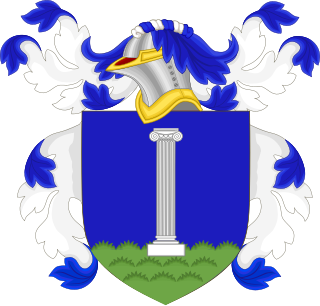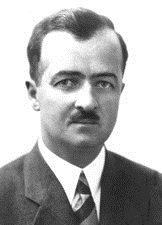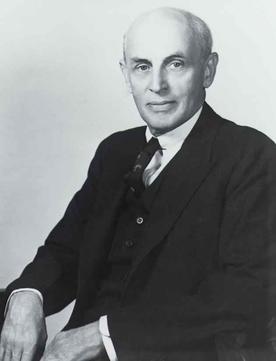
Wilmington is the most populous city in the U.S. state of Delaware. The city was built on the site of Fort Christina, the first Swedish settlement in North America. It lies at the confluence of the Christina River and Brandywine Creek, near where the Christina flows into the Delaware River. It is the county seat of New Castle County and one of the major cities in the Delaware Valley metropolitan area. Wilmington was named by Proprietor Thomas Penn after his friend Spencer Compton, Earl of Wilmington, who was prime minister during the reign of George II of Great Britain.

The Hagley Museum and Library is a nonprofit educational institution in unincorporated New Castle County, Delaware, near Wilmington. Covering more than 235 acres (95 ha) along the banks of the Brandywine Creek, the museum and grounds include the first du Pont family home and garden in the United States, the powder yards, and a 19th-century machine shop. On the hillside below the mansion lies a Renaissance Revival garden, with terraces and statuary, created in the 1920s by Louise Evelina du Pont Crowninshield (1877–1958).

The du Pont family or Du Pont family is a prominent American family descended from Pierre Samuel du Pont de Nemours (1739–1817), a French minor aristocrat. It has been one of the richest families in the United States since the mid-19th century, when it founded its fortune in the gunpowder business. In the late 19th and early 20th centuries, it expanded its wealth through the chemical industry and the automotive industry, with substantial interests in the DuPont company, General Motors, and various other corporations.

Pierre Samuel du Pont was an American entrepreneur, businessman, philanthropist and member of the prominent du Pont family.

Irénée du Pont I was an American businessman, president of the DuPont company, and head of the Du Pont trust.

Thomas Coleman du Pont was an American engineer and politician, from Greenville, Delaware. He was President of E. I. du Pont de Nemours and Company, and a member of the Republican Party who served parts of two terms as United States Senator from Delaware.

Victor Marie du Pont de Nemours was a French American diplomat, politician, and businessman. He was also a member of the Delaware General Assembly, the founder of the Du Pont, Bauduy & Co., wool manufacturers, and brother of Éleuthère Irénée du Pont, the founder of the E.I. du Pont de Nemours Company.

Robert Pyle Robinson was an American banker and politician from Wilmington, in New Castle County, Delaware. He was a member of the Republican Party who served as Governor of Delaware.

Clayton Douglass Buck was an American engineer and politician from New Castle Hundred, New Castle County, Delaware. He was a veteran of World War I and a member of the Republican Party, who served two terms as governor and one term as U.S. Senator from Delaware. He was known by his middle name.

Alfred Irénée du Pont was an American industrialist, financier, philanthropist and a member of the influential Du Pont family.

Francis Irénée du Pont was an American chemist and executive at the E.I. du Pont de Nemours Company. He was the great grandson of its founder, Éleuthère Irénée du Pont.

The Delaware Art Museum is an art museum located on the Kentmere Parkway in Wilmington, Delaware, which holds a collection of more than 12,000 objects. The museum was founded in 1912 as the Wilmington Society of the Fine Arts in honor of the artist Howard Pyle. The collection focuses on American art and illustration from the 19th to the 21st century, and on the English Pre-Raphaelite Brotherhood movement of the mid-19th century.

Delaware Route 52 (DE 52) is a state highway in New Castle County, Delaware. The route runs from U.S. Route 13 Business in downtown Wilmington north to Pennsylvania Route 52 (PA 52) at the Pennsylvania border near Centerville. DE 52 runs through the city of Wilmington and passes through areas of the Brandywine Valley north of Wilmington. DE 52 intersects Interstate 95 (I-95)/US 202 and DE 2 in Wilmington and DE 100/DE 141 and DE 82 in Greenville. The entire route is designated as part of the Brandywine Valley National Scenic Byway, a National Scenic Byway and Delaware Byway, while most of the route is also designated as part of the Harriet Tubman Underground Railroad Byway of the Delaware Byways system. The road was built as the Kennett Pike, a turnpike, between 1811 and 1813. The Kennett Pike was bought by Pierre S. du Pont in 1919 and was widened and paved before being sold to the State of Delaware for $1. The road received the DE 52 designation by 1936.

Robert Ruliph Morgan Carpenter was an American executive and member of the board of directors of DuPont.

St. Anthony of Padua Roman Catholic Church is a Catholic parish in Wilmington, Delaware. Named in honor of Anthony of Padua, it falls within the jurisdiction of the Diocese of Wilmington and is operated by the Oblates of St. Francis de Sales. It is situated in Wilmington's Little Italy neighborhood, where the parish includes St. Anthony's School and Padua Academy.
The Alfred I. duPont Testamentary Trust is a non-profit organization created by philanthropist Alfred Irénée du Pont in 1935, devoted to supporting the trust's sole charitable beneficiary, the Nemours Foundation. As of 2015, the organization stated it oversaw approximately $5 billion in assets.
Daniel Lionel Herrmann was an American lawyer, professor and community leader who served as a justice of the Delaware Supreme Court from 1964 to 1973 and chief justice from 1973 to 1985. Herrmann was known for his contributions to judicial reform and was the first Jewish judge in Delaware.

E. William Martin was a Scottish-born American architect in practice in Wilmington, Delaware from 1926 to 1965. In part through personal and political connections to members of the wealthy du Pont family Martin was architect of many important public works in Delaware, including public schools, the Zwaanendael Museum and the Delaware Legislative Hall.














